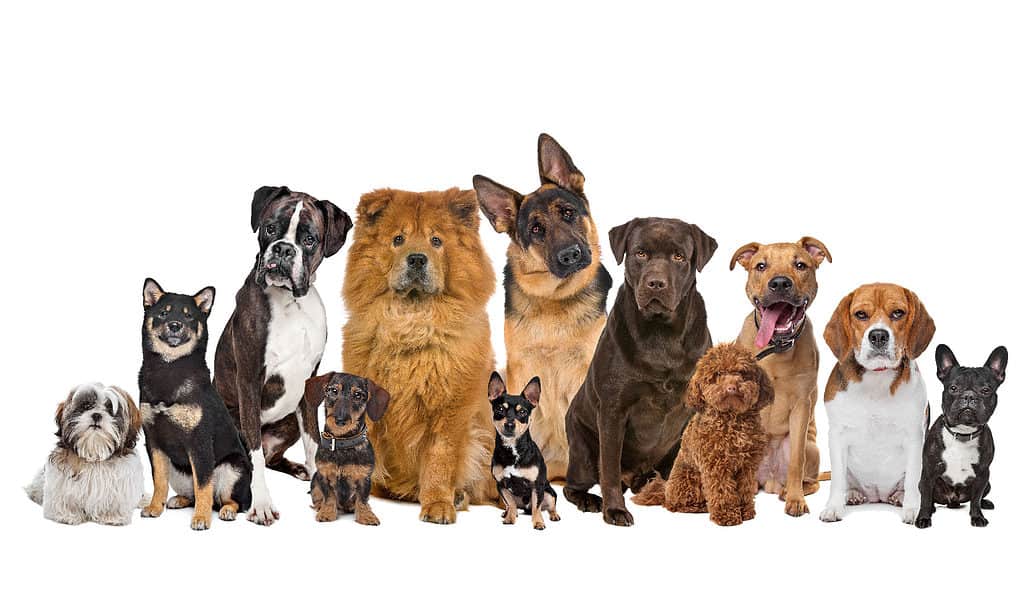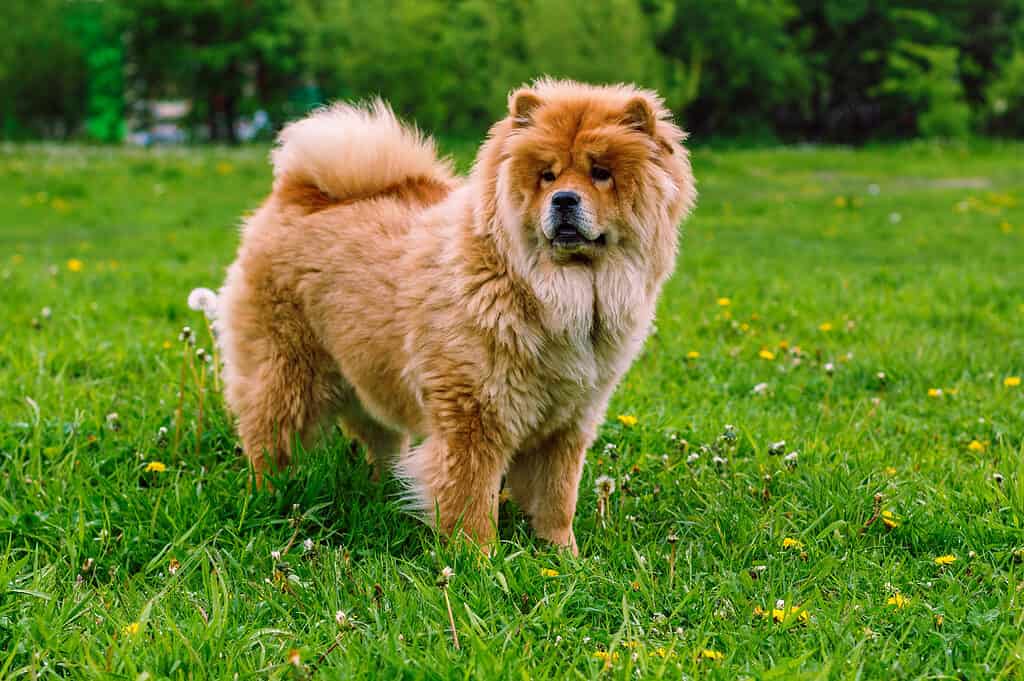What Are Domestic Dogs?

©Erik Lam/Shutterstock.com
Dogs were likely first domesticated in Siberia around 23,000 years ago. This remains an open discussion that changes as new archaeological evidence becomes available. It is widely agreed upon, though, that the domestic dog, Canis familiaris, is a direct descendent of gray wolves, Canis lupus. In fact, many people categorize domestic dogs and wolves as the same species, but different subspecies. Close relatives belonging to the same genus are the golden jackal, Canis aureus, and the coyote, Canis latrans. Jackals and coyotes, like wolves but unlike pet dogs, are wild canine species.
Several characteristics of dogs have diverged from those of their wolf ancestors because of selective breeding. Humans breed dogs with certain traits to make them more suited for particular roles, like hunting, guarding, herding, and so forth. Humans also select for traits that are aesthetically pleasing or favorable in dog shows. For example, domestic dogs have muscles in their faces that wolves do not. These muscles allow dogs to move their eyebrows and are a result of human breeding because the facial expressions they can make are widely adored by pet owners and dog show trainers. A long history of breeding has led to many different shapes and sizes of dogs with many unique traits. When they were first domesticated, however, there was far less diversity within the species than there is now.
When Was the Chow Chow Bred?

©Flower_Garden/Shutterstock.com
The chow chow is a basal breed, meaning that it existed very early before many modern breeds. Scientists dispute the exact origin of the Chow Chow both with respect to time and location, however. Some suggest the chow chow was first bred 2,000 years ago in China, whereas another popular theory posits an earlier date 3,000 years ago further north in the Asian arctic. Breeding of many modern dog breeds began around the turn of the 19th century, so the chow chow has an exceptionally long history in comparison.
What Was the Chow Chow Bred For?

©Maxim Petrichuk/Shutterstock.com
The chow chow was bred to perform many jobs in extremely harsh conditions. They have a thick coat of fur that provides them with the insulation necessary to withstand freezing temperatures. Their double coat consists of a topcoat and an under coat, like that of a Newfoundland or many other later breeds. This is an example of a selected trait; humans bred the chow chow to have a thick coat so it could be better suited for work in the snow.
The chow chow breed’s original job was as a guard dog. Other early jobs include hunting, herding, and notably, sled-pulling. Records from Marco Polo describe Chinese people using dog sleds drawn by chow chows! In addition to their thick coat, chow chows are also suitable for these jobs because of their size. Males typically weigh between 40 and 90 pounds, and females 35 to 85 pounds. They also have protective and territorial tendencies helpful to their historic roles as guard dogs, including during warfare. The breed is very loyal and has been by man’s side for millennia.
What Jobs Do Chow Chows Have Now?

©Roman Zaiets/Shutterstock.com
Today, chow chows primarily serve as companion animals or household pets. The American Kennel Club therefore classifies the chow chow in the “nonsporting” group, which is the most diverse dog breed grouping. Other classifications include the “hound”, “sporting”, and “herding” groups which refer to dogs with other roles and breeding histories. People still train chow chows to be guard dogs in residences and on properties but they are less common as sled dogs. In modern dogsledding for sport, the most common dog breeds on a team are Alaskan malamutes, Alaskan huskies, and Siberian huskies. These are the breeds most commonly participating in the Iditarod dogsledding race. The American Kennel Club also lists the Samoyed, Alaskan Malamute, Siberian husky, and chinook as the best dogsledding breeds.
Chow chows are not a common breed used as service animals or emotional support animals. Due to their history, including their roles as guard dogs, they can be defensive or even aggressive towards people they do not know. In a service dog role, social skills with humans are very important, especially patience and docility. Chow chows are therefore not perfectly suited, however any dog with the proper conditions and training is capable of performing well as a service or emotional support animal.
Fun Facts About Chow Chows:
- Chow chows are famous for their bluish-black tongue! Interestingly, Chow chows and shar-peis are the only pure-bred dogs that consistently have this cool trait. Eurasiers can have blue-black tongues sometimes, but many also have pink or spotted ones.
- Another fun fact is that Walt Disney had a chow chow! He and his wife had a chow chow named Sunnee that potentially influenced scenes from Lady and the Tramp.
- Two more notable chow chow owners are Martha Stewart and Elvis Presley. Martha Stewart had many chow chows that occasionally appeared on her show. She also had one named Genghis Khan. Elvis Presley had one named Getlow.
The photo featured at the top of this post is © iStock.com/foto-front
Ready to discover the top 10 cutest dog breeds in the entire world?
How about the fastest dogs, the largest dogs and those that are -- quite frankly -- just the kindest dogs on the planet? Each day, AZ Animals sends out lists just like this to our thousands of email subscribers. And the best part? It's FREE. Join today by entering your email below.
Thank you for reading! Have some feedback for us? Contact the AZ Animals editorial team.







